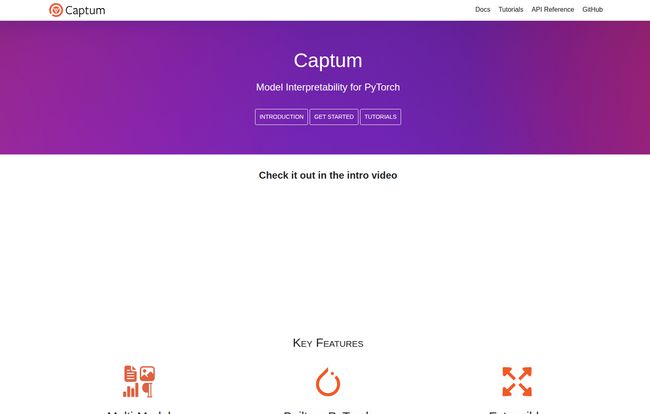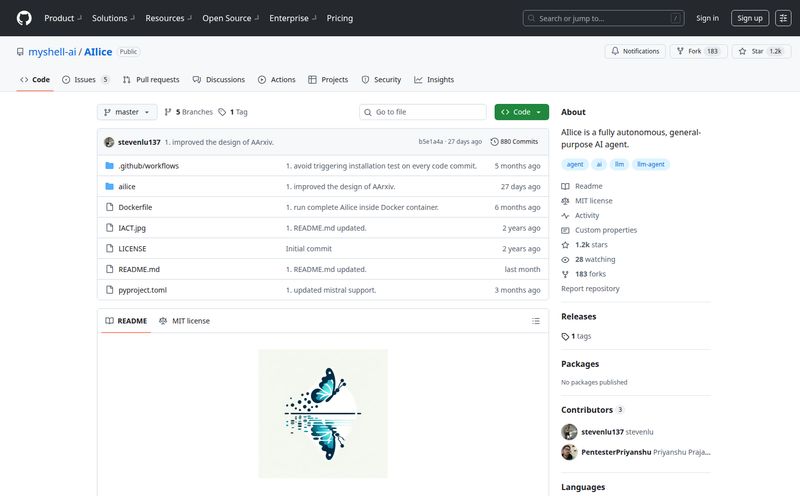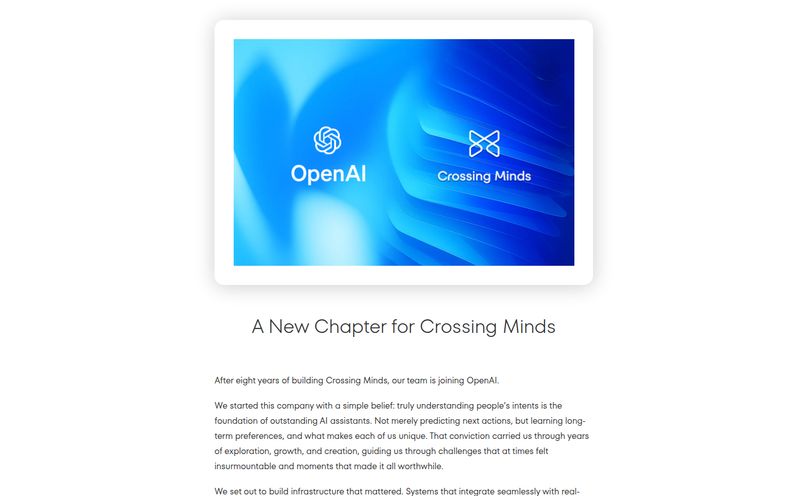We've all been there. You spend weeks, maybe months, building a shiny new machine learning model in PyTorch. It's performing beautifully, hitting all the accuracy metrics, and you're ready to show it off. Then someone asks a simple question:
Why did it make that decision?"And… crickets. For all their power, many of our models operate like mysterious black boxes. They give us answers, but they don't show their work. This is more than just a philosophical problem; it’s a practical one. How do you debug a model you don’t understand? How do you build trust with users if you can't explain its behavior? How do you ensure it isn't making decisions based on biased or irrelevant data?
For years, this has been a major pain point in the ML community. I've personally wrestled with models where I just had to cross my fingers and hope for the best. That’s why when I first stumbled upon Captum, I was genuinely intrigued. It promised to be a flashlight in the dark, specifically for those of us living in the PyTorch world.
Visit Captum So, What's the Big Deal with Captum Anyway?
In a nutshell, Captum is an open-source, model interpretability library built by the folks at Meta AI (you might remember them as Facebook AI). It's designed to plug right into your PyTorch projects and help you understand what's going on under the hood. The name itself comes from the Latin word for "comprehension," which is a pretty on-the-nose goal.
Instead of just getting a final prediction (like "cat" or "dog"), Captum helps you attribute that prediction back to the input features. In other words, it helps you answer questions like, "Which pixels in this image made the model scream 'cat'?" or "Which words in this product review most heavily influenced its 5-star rating?" This process is often called feature attribution, and it's a cornerstone of what we now call Explainable AI, or XAI.
Why Model Interpretability Isn't Just a 'Nice-to-Have'
Before we get into the nuts and bolts of Captum, I want to pause on this. Why should you, a busy developer or data scientist, add another library to your stack? Because understanding your model is critical.
- Debugging: If your model is making weird predictions, interpretability tools are your best debugger. You might find it’s focusing on the background of an image instead of the subject, a classic sign of dataset issues.
- Building Trust: For high-stakes applications like medical diagnoses or loan approvals, you must be able to explain the reasoning. "The computer said so" just doesn't cut it.
- Fairness and Bias Audits: These tools can reveal if a model is unfairly weighing factors like gender or race, which might be hidden in the proxy data.
- Scientific Discovery: Sometimes, a model learns patterns that we humans missed. Interpretability can lead to new insights in fields from genetics to astronomy.
Think of it like a car mechanic. A bad mechanic just swaps parts until the car starts. A great mechanic uses diagnostic tools to understand exactly what’s broken before they even pick up a wrench. Captum is that diagnostic tool for your AI.

Visit CaptumCaptum's Core Strengths
I've played around with a few interpretability libraries over the years, and they often feel… bolted on. Clunky. Like trying to fit a square peg in a round hole. What I immediately liked about Captum is how native it feels to the PyTorch ecosystem.
Built for the PyTorch Ecosystem
This is its biggest selling point. Captum is built on PyTorch, for PyTorch. It understands Tensors and `nn.Module` objects. You don't need to export your model to some weird format or rewrite your entire forward pass. In most cases, you can take your existing model and apply Captum's attribution algorithms with just a few lines of code. This low barrier to entry is fantastic because it encourages you to actually use it, rather than putting it on the "I'll learn it someday" pile.
Beyond Just Pictures: Multi-Modal Magic
A lot of early XAI work was heavily focused on computer vision. While that's super useful, our models are increasingly multi-modal. We're dealing with text, audio, time-series data, you name it. Captum was designed from the ground up to be generic. As long as your model is in PyTorch, Captum can probably help you interpret it. This flexibility is huge and saves you from having to learn a different tool for every data type you work with.
Visit Captum An Open-Source Playground for Researchers
Captum isn’t just a black box itself. It's an open-source library that implements a whole host of well-regarded attribution methods, like Integrated Gradients, DeepLIFT, and GradientSHAP. But it's also designed to be extensible. If you're a researcher developing a new interpretability technique, you can easily implement it within Captum's framework and benchmark it against existing methods. This fosters a healthy, growing community around the tool.
Getting Your Hands Dirty with Captum
Talk is cheap, right? Let's look at how simple it is to get started. The official documentation has a `ToyModel` example that perfectly illustrates the workflow.
First, you install it. No suprises here.
pip install captumNext, let's imagine you have a very basic PyTorch model. The one in their example has a couple of linear layers.
import torchimport torch.nn as nnclass ToyModel(nn.Module): def __init__(self): super().__init__() self.linear1 = nn.Linear(3, 4) self.relu = nn.ReLU() self.linear2 = nn.Linear(4, 2) def forward(self, input): return self.linear2(self.relu(self.linear1(input)))model = ToyModel()Now, here comes the Captum magic. Let's say we want to use Integrated Gradients, a popular method, to see how a specific input affects the output. You just import the algorithm, create an instance of it, and call the `attribute` method. It's that straightforward.
from captum.attr import IntegratedGradients# Wrap your model with the algorithmig = IntegratedGradients(model)# Create some dummy input and a baselineinput_tensor = torch.randn(2, 3)baseline = torch.zeros(2, 3)# Get the attributions!attributions, delta = ig.attribute(input_tensor, baseline, target=0, return_convergence_delta=True)print(attributions)The `attributions` tensor it returns has the same shape as your input. Each value tells you how much that corresponding input feature contributed to the final prediction for your chosen target class. It's an incredibly powerful way to get a granular look at your model's reasoning.
A Word of Caution: The Not-So-Shiny Parts
Okay, I'm a fan, but no tool is perfect. It's only fair to point out a few things to keep in mind.
First, you obviously need to be comfortable with PyTorch. If you're a TensorFlow or JAX person, this isn't the tool for you. It lives and breathes the PyTorch API. Second, while it works out-of-the-box for most models, some particularly complex or non-standard architectures might require a little bit of modification to play nice with Captum's hooks. Finally, the examples are, by design, very simple. Applying these methods to a massive transformer model and correctly interpreting the results requires more nuance than the `ToyModel` example lets on. But that's part of the learning process, isnt it?
Visit Captum Pricing: The Best Kind of Free
This will be a short section. How much does this powerful diagnostic tool cost? Nothing. It's free. It's open-source under a permissive license. In fact, when I tried to find a pricing page, the link was broken, which I find kind of hilarious. It just leads to a GitHub 404 page. That's about as strong a confirmation as you can get that this is a community-focused tool, not a commercial product.
Frequently Asked Questions about Captum
Is Captum only for computer vision models?
Absolutely not! That's one of its greatest strengths. It's designed to be modality-agnostic. It works just as well for attributing predictions in NLP models (text), and can be adapted for pretty much any data that can be represented in a PyTorch tensor.
Do I need to be a PyTorch expert to use Captum?
You don't need to be an expert, but you do need a solid working knowledge of PyTorch. You should be comfortable with creating models (`nn.Module`), handling tensors, and understanding the basic training loop. If you're new to PyTorch, I'd recommend getting comfortable with it first before adding interpretability into the mix.
Who is behind Captum?
Captum was developed and is maintained by the AI team at Meta (formerly Facebook). It's part of their effort to support the PyTorch ecosystem, much like other libraries they've released.
How does Captum compare to other libraries like SHAP or LIME?
Great question! SHAP and LIME are fantastic, foundational libraries in XAI. Captum actually implements some algorithms inspired by them (like `GradientSHAP`). The main difference is Captum's laser focus on the PyTorch ecosystem. It's designed to be a more native, integrated experience for PyTorch developers, whereas libraries like SHAP aim to be more framework-agnostic.
What kind of attribution methods does Captum support?
It supports a wide range, primarily gradient-based methods. This includes simple Saliency maps, Integrated Gradients, DeepLIFT, Gradient SHAP, and noise-based methods like Occlusion and Feature Ablation. This gives you a great toolkit to compare different views of your model's behavior.
My Final Verdict
So, should you use Captum? If you're a PyTorch developer who cares about what your models are actually learning, my answer is a resounding yes. It's not a silver bullet that will magically solve all your problems, but it is an incredibly well-designed, powerful, and accessible tool for peeling back the layers of your AI.
It lowers the barrier to entry for model interpretability, turning it from an academic exercise into a practical step in your development workflow. And in a world where AI is becoming more powerful and more integrated into our lives, that kind of understanding isn't just a feature—it's a responsibility.
Reference and Sources



